
Multiagent and Grid Systems
Scope & Guideline
Transforming Theories into Practices in Computer Science
Introduction
Aims and Scopes
- Multi-Agent Systems Development:
Research on the design, implementation, and optimization of multi-agent systems, focusing on their ability to solve complex problems collaboratively. - Grid and Cloud Computing:
Exploration of methodologies and frameworks that enhance resource management, load balancing, and fault tolerance in grid and cloud environments. - Artificial Intelligence and Machine Learning:
Application of AI and ML techniques in various domains, including security, healthcare, and environmental monitoring, to improve system performance and decision-making. - Blockchain Technology Integration:
Investigation of blockchain applications in multi-agent systems for enhancing security, transparency, and efficiency in data management and transactions. - Optimization Techniques:
Development of novel optimization algorithms and hybrid models to improve classification, resource allocation, and task scheduling in distributed systems.
Trending and Emerging
- Quantum Multi-Agent Systems:
The integration of quantum computing principles with multi-agent systems is an emerging focus area, offering potential breakthroughs in processing speed and problem-solving capabilities. - Multimodal Biometric Authentication:
Research on advanced authentication methods using multimodal biometric data is gaining prominence, particularly in enhancing security for financial transactions and personal identification. - Deep Learning Applications:
A significant increase in the application of deep learning for various tasks such as object tracking, medical image analysis, and recommendation systems highlights the trend towards AI-driven solutions. - Blockchain for Health and IoT:
The application of blockchain technology in healthcare and IoT systems is rapidly growing, showcasing its potential to improve data integrity and management in these sectors. - Hybrid Optimization Algorithms:
The development of hybrid algorithms combining multiple optimization techniques is trending, as researchers seek more effective solutions for classification and resource allocation challenges.
Declining or Waning
- Traditional Security Protocols:
Research on conventional security protocols in multi-agent systems has diminished as newer, more robust solutions like blockchain-based security models gain traction. - Basic Agent Communication Models:
The exploration of simple agent communication protocols is less prevalent, likely overshadowed by more complex, adaptive systems that incorporate machine learning techniques. - Static Resource Allocation Techniques:
Studies focused solely on static resource allocation methods are declining as dynamic and predictive resource management approaches become more relevant in cloud computing. - General Surveys without Novel Contributions:
The frequency of broad surveys or reviews that do not present new insights or methodologies has decreased, indicating a shift towards more innovative and application-driven research.
Similar Journals
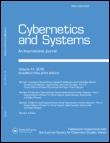
CYBERNETICS AND SYSTEMS
Charting New Territories in Cybernetics and SystemsCYBERNETICS AND SYSTEMS, published by Taylor & Francis Inc, is a pivotal journal in the fields of Artificial Intelligence, Information Systems, and Software, with its publication spanning from 1980 to 2024. Holding an ISSN of 0196-9722 and an E-ISSN of 1087-6553, this journal is recognized for its impactful contributions, ranked in Q3 across its categories according to the latest metrics. With Scopus rankings placing it at the 57th percentile for Information Systems and maintaining substantial presence in Software and Artificial Intelligence fields, CYBERNETICS AND SYSTEMS serves as an essential platform for disseminating cutting-edge research. The journal aims to publish original research, theoretical frameworks, and innovative applications that advance the understanding of system processes and cybernetic interactions, making it an invaluable resource for researchers, professionals, and students seeking to remain at the forefront of these rapidly evolving disciplines.
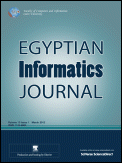
Egyptian Informatics Journal
Navigating the Frontiers of Information ScienceEgyptian Informatics Journal, published by CAIRO UNIV, FAC COMPUTERS & INFORMATION, is an esteemed open-access publication that has been making significant contributions to the fields of Computer Science, Information Systems, and Management Science since its inception in 2010. With its ISSN 1110-8665 and E-ISSN 2090-4754, the journal stands out for its commitment to disseminating high-quality research, evidenced by its Q1 ranking in 2023 across multiple disciplines in Scopus, including a notable ranking of #15 in Decision Sciences and Management Science, and #44 in Information Systems. The journal's coverage spans from 2010 to 2024, making it a vital resource for researchers and practitioners looking to stay abreast of contemporary advancements in informatics. With an increasing impact and a remarkably growing readership, the Egyptian Informatics Journal provides an indispensable platform for scholarly dialogue and innovation in informatics, catering not only to researchers but also to professionals and students aiming to excel in these rapidly evolving fields.

International Journal of Networked and Distributed Computing
Empowering Scholars in the Realm of ComputingWelcome to the International Journal of Networked and Distributed Computing, published by SpringerNature, a premier outlet for cutting-edge research in the realms of computer networks and distributed computing systems. Established as an Open Access journal since 2013 and based in the Netherlands, this publication strives to disseminate high-quality, peer-reviewed studies that address the complexities of contemporary computing challenges. With an impact factor that reflects its growing influence—positioned in the Q3 category for both Computer Networks and Communications and Computer Science Applications—this journal serves as a pivotal resource for scholars and practitioners aiming to advance knowledge and innovation in this rapidly evolving field. The journal encompasses diverse topics, from network protocols to distributed algorithms, ensuring that researchers, professionals, and students can find relevant insights and methodologies to inform their work. Join us in exploring the depths of networked and distributed computing, contributing to a collaborative academic environment that shapes the future of technology.

DISTRIBUTED COMPUTING
Unraveling Complexities of Distributed ComputingDISTRIBUTED COMPUTING is a prestigious journal published by SPRINGER that has been a significant contributor to the fields of computational theory, computer networks, and hardware architecture since its inception in 1986. With its ISSN 0178-2770 and E-ISSN 1432-0452, this scholarly publication stands out for its rigorous peer-review process and its commitment to advancing knowledge in distributed systems. The journal has consistently ranked in the Q1 category for multiple relevant domains, reflecting its high impact within the academic community. Although not an open-access journal, DISTRIBUTED COMPUTING offers essential insights and research contributions that are invaluable to researchers, professionals, and students alike. Its scope encompasses various aspects of computational theory and mathematics, ensuring a comprehensive approach to the complexities of distributed systems. With an address in New York, USA, and a delivery timeline extending to 2024, this journal is poised to continue influencing the landscape of computer science and beyond.
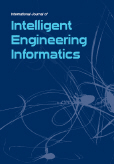
International Journal of Intelligent Engineering Informatics
Navigating the Frontiers of Computer Science and AI.International Journal of Intelligent Engineering Informatics, published by INDERSCIENCE ENTERPRISES LTD, stands at the forefront of research in the interdisciplinary domains of computer science, artificial intelligence, and human-computer interaction. With an ISSN of 1758-8715 and E-ISSN of 1758-8723, this journal serves as a vital resource for researchers and professionals seeking to explore the latest advancements in intelligent engineering and informatics techniques crucial for the evolution of modern technologies. Although currently not an open-access publication, it provides a necessary platform for disseminating high-quality research; its impact factor continues to grow, attracting a diverse readership interested in signal processing, software development, and computer vision. Covering innovative topics from 2022 to 2024, the journal is committed to fostering scholarly dialogue that paves the way for emerging trends and applications in the field, ensuring its relevance and significance in today's rapidly advancing technological landscape.
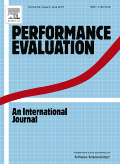
PERFORMANCE EVALUATION
Pioneering Research for Enhanced Performance SolutionsPERFORMANCE EVALUATION, published by ELSEVIER, is a prestigious journal that serves as a critical resource for researchers and professionals in the fields of Computer Networks and Communications, Hardware and Architecture, Modeling and Simulation, and Software. With its ISSN 0166-5316 and E-ISSN 1872-745X, this journal is recognized for its contribution to the advancement of performance assessment methodologies and empirical research. Holding a Q3 quartile ranking across multiple categories in 2023, PERFORMANCE EVALUATION is positioned as a valuable platform for disseminating high-quality studies that explore complex performance issues and innovative solutions. Operating from its base in the Netherlands, this journal emphasizes rigorous peer-review standards and enhances its relevance within the academic community by addressing crucial challenges and trends in technology. Stakeholders can access the wealth of knowledge published from 1981 through 2024 by exploring this journal, making it an essential tool for practitioners and scholars aiming to stay at the forefront of computer science research.

Service Oriented Computing and Applications
Innovating Across Service-Oriented TechnologiesService Oriented Computing and Applications is an esteemed journal published by SPRINGERNATURE, focusing on the rapidly evolving domains of service-oriented computing and its myriad applications. With an ISSN of 1863-2386 and an E-ISSN of 1863-2394, this journal has an impressive track record since its inception in 2007, converging with significant contributions from researchers and professionals through 2024. This journal stands out in the academic landscape, evidenced by its categorization in Q2 across multiple fields, including Hardware and Architecture, Information Systems, Management Information Systems, and Software, as per the latest 2023 metrics. Although it does not currently offer Open Access options, its relevance in Computer Science, Business Management, and integrated technology makes it a valuable resource for scholars and practitioners alike, aiming to explore the intersection of computing technologies and their application in real-world scenarios. The journal's rankings in Scopus provide further testament to its impact and importance, making it a key publication for anyone looking to stay at the forefront of advancements in service-oriented computing.
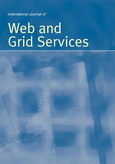
International Journal of Web and Grid Services
Driving excellence in web and grid services scholarship.International Journal of Web and Grid Services, published by INDERSCIENCE ENTERPRISES LTD, is a distinguished platform for innovative research in the realms of Web Services, Grid Computing, and Distributed Systems. Established in 2005, the journal has consistently provided a forum for groundbreaking studies, catering to the evolving needs of academia and industry professionals alike. As of 2023, it is positioned in the Q3 quartile in both Computer Networks and Communications and Software, showcasing a notable impact within the field. Researchers will find this journal instrumental in disseminating knowledge, driving advancements, and fostering collaboration in the rapidly changing technological landscape. Although it currently does not offer open access options, its commitment to high-quality peer-reviewed content ensures that it remains a vital resource for those seeking to stay at the forefront of web and grid services research. With an audience comprising both seasoned scholars and emerging professionals, the International Journal of Web and Grid Services continues to be pivotal in shaping ongoing discourse and innovation.

INTEGRATED COMPUTER-AIDED ENGINEERING
Catalyzing Knowledge Exchange in Engineering DisciplinesINTEGRATED COMPUTER-AIDED ENGINEERING (ISSN: 1069-2509, E-ISSN: 1875-8835) is a prominent journal published by IOS PRESS in the Netherlands, renowned for its rigorous coverage of the interdisciplinary fields of artificial intelligence, computational theory, and software applications. Since its inception in 1993, this journal has consistently contributed to the academic discourse, standing out in the Q1 and Q2 quartiles across various categories as of 2023. With Scopus rankings placing it in the93rd percentile for computational theory and mathematics and 91st for theoretical computer science, it is a vital resource for researchers and professionals seeking to explore innovative methodologies and advanced engineering solutions. While not an open-access journal, INTEGRATED COMPUTER-AIDED ENGINEERING provides comprehensive access options for institutional subscribers, ensuring the dissemination of vital research findings to a global audience. This journal aims to facilitate the exchange of knowledge, inspire future studies, and foster technological advancements in computer-aided engineering.
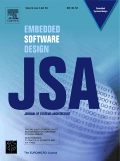
JOURNAL OF SYSTEMS ARCHITECTURE
Exploring Cutting-edge Research in ArchitectureJOURNAL OF SYSTEMS ARCHITECTURE is a prestigious academic journal published by ELSEVIER, based in the Netherlands, that has established itself as a leading platform for research in the fields of Hardware and Architecture and Software. With an impressive impact factor and ranked in the Q1 category for both computer science sectors, this journal is recognized for its high-quality contributions, evidenced by its Scopus ranking of #32 in Hardware and Architecture and #74 in Software, placing it in the top percentiles of its field. The journal spans a wide range of topics central to systems architecture, focusing on innovative research that advances the understanding of computer systems and promotes future developments. Researchers, professionals, and students alike will find invaluable insights and emerging trends that address the challenges and opportunities within the rapidly evolving field of systems design and architecture. Spanning from 1996 to 2024, the JOURNAL OF SYSTEMS ARCHITECTURE continues to be a vital resource for those seeking to stay at the forefront of technology and research.